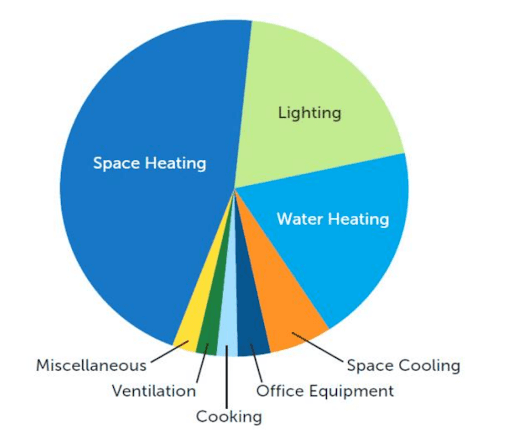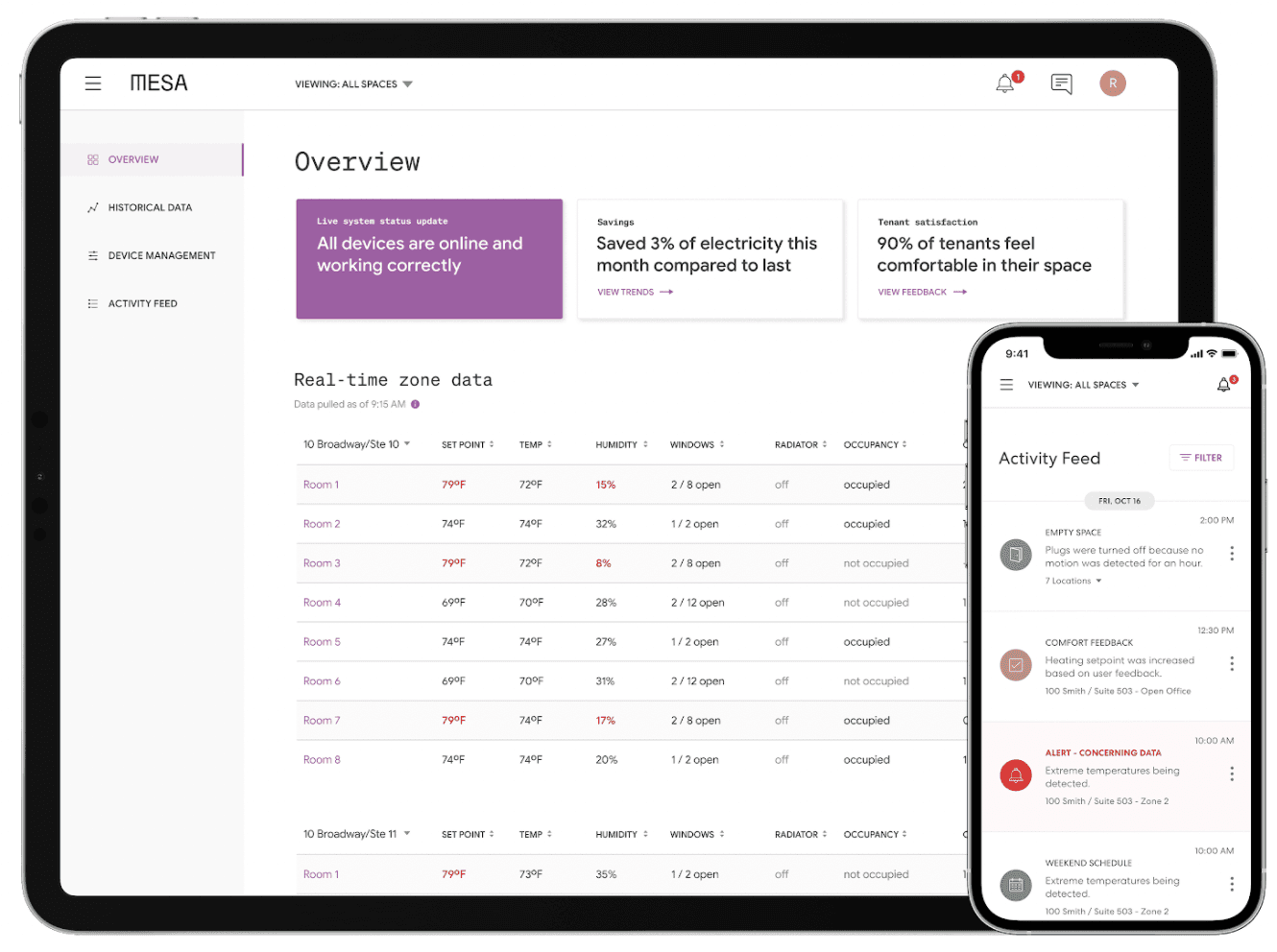Mesa
Here's how schools can create a smart, safe environment in classrooms
With Mesa, facility managers in schools can improve ventilation, save up to 20 percent in energy costs, and ensure a safe and smart environment for students in the classroom.
By Aravind Kumar

Contact us to learn more about Mesa
Contact UsThousands of school districts are now offering students full-time, in-person learning, with the added option of online and hybrid learning. Post-Covid, school administrations are uniquely faced with a few critical challenges: maintaining the health and safety of the buildings’ occupants, ensuring the operational efficiency of their school infrastructure, and enabling the effective teaching of their students.
A staggering statistic from the National Center for Education Statistics shows that 29 percent of U.S. public schools are more than 25 years old, or were renovated almost 20 years ago. Complications from the pandemic have made facility managers and landlords rethink how many of their schools approach infrastructure, especially ventilation systems, to adapt to the new needs around safety and hybrid occupancy.
But now, with affordable solutions like Sidewalk Labs’s Mesa, schools have an opportunity to not just retrofit their buildings to make them safer, but smarter, more energy-efficient (less expensive to operate), and even more comfortable. If you’re a school facility manager responsible for these important objectives, here’s how you can create a smart and safe environment for students in your school.
Bring in fresh air. When it comes to health and safety measures, a good supply of outside air (in accordance with ASHRAE Standard 62.1-2019) is recommended to dilute indoor contaminants and reduce the likelihood of Covid in closed environments. Automated and real-time control of heating and cooling systems makes it easier to control this kind of ventilation — and that’s where an easy and affordable system like Mesa can help. Mesa is a suite of sensors and connected devices that uses real-time data and plug-and-play automation to optimize HVAC systems and plug loads. With Mesa, facility managers can program their HVAC systems to let fresh air in based on the time of day and an area’s occupancy level. Facility managers can also use Mesa sensors to measure the Indoor Air Quality (IAQ) and program Mesa to let heating and cooling systems bring in more fresh air as needed.
Save energy — and costs. According to a report from EnergyStar, energy use in K-12 schools amounts to $6 billion annually. What’s more, as much as 30 percent of a school district’s energy use is inefficient or unnecessary. While energy varies from school to school, the chart below illustrates the end uses of electricity and natural gas in the average school. Collectively, heating and cooling make up a majority of energy usage. According to an Energy Star report, the energy used to light classrooms and hallways, power computer labs, and heat and cool school buildings costs more than textbooks and technology combined — and more than teachers’ collective salaries.

Figure 2: End uses of total energy (electricity, natural gas, etc.) in K-12 Schools. Courtesy: U.S. Department of Energy, Energy Solutions for School Buildings, 2006.
Schools with near full-time occupancy naturally imply a spike in energy needs, but this does not mean energy bills have to spin out of control. Mesa can manage heating and cooling set points based on occupancy and can save avoidable costs that would have otherwise led to unnecessary heating and cooling, even after students have left for the day or over weekends. Similarly, Mesa can turn off plug loads that power projectors or TVs in classrooms when no one is present, saving costs that can easily add to monthly bills.
Prevent costly equipment failures. Preventing expensive repairs can not only save schools money, but ensure students’ learning environments are never interrupted. Luckily, Mesa lets facility managers catch potential failures before they become problematic by offering real-time warnings that let them know a system isn’t functioning properly. Plus, Mesa’s remote notifications and performance reports allow facility managers to dig deeper to determine the root cause of such irregularities, without even needing to be on-site. This can save schools thousands of dollars in labor and material costs.
Improve productivity for all. Classrooms can sometimes be too hot or too cold because of manual errors, like windows being left open or because HVAC systems aren’t responding to real-time changes. An analysis from the National Bureau of Economic Research suggests that, when classrooms get too hot, it prevents students from learning as well as they would in more comfortable temperatures. Mesa makes it easy for students and staff alike to provide direct feedback on whether they feel hot or cold, enabling the HVAC system to adjust its setpoint and prevent overheating and overcooling of spaces. Facility managers can use Mesa sensors to detect whether windows are mistakenly left open and gain insights on indoor temperatures, as well as humidity levels. Facility managers can also use Mesa’s external weather data sensors to prepare for unusually hot or cold days, unlike other non-automated systems that would leave the space uncomfortable.

Mesa's dashboard provides historical data about the historical actions the system has taken to conserve energy, and it also sends alerts when additional actions, like opening or closing windows, can be used to save even more.
As schools adjust to the new normal of classroom learning, providing students a smarter and safer school environment will be top of mind. Facility managers can depend on solutions like Mesa to meet their ever-changing needs, keeping students and staff comfortable.
To learn more about how Mesa can help your school save energy — and create a better learning environment for students — contact mesa@sidewalklabs.com.